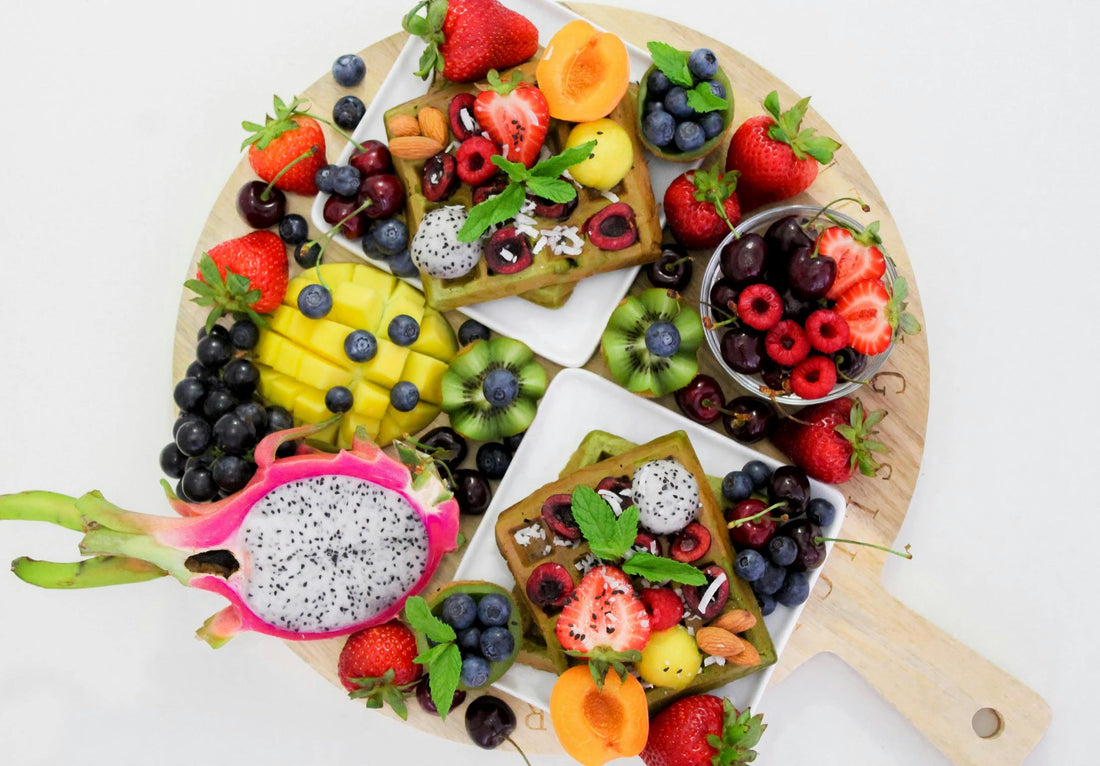
The Food Motivation Station: Reframing How We Think About Eating
Share
Ever find yourself eating on autopilot—barely tasting your food, rushing through meals, or focusing only on calories? What if you could transform every meal into a Motivation Station? Instead of just eating because you're hungry or craving something, take a moment to think about what you're eating and connect with how food supports your body at the deepest level.
This isn’t a meditation retreat or a nutrition textbook, it’s a playful experiment at the crossroads of food, science, and mindfulness. Use what resonates, leave what doesn’t.
Of course, research is always evolving and everyone’s relationship with food is unique. Think of this less as a prescription and more as an experiment one mindful bite at a time.
That’s the idea behind the Food Motivation Station, a simple fun practice designed to help build mindful and positive thoughts around food.
Why Mindset Matters in Eating
The way we think about food has a powerful influence on how much enjoyment and benefit we get from it. Research shows that mindful eating, being present with food and aware of its qualities, can improve self-control, reduce stress around eating, and strengthen healthy food choices (Arch et al., 2016; Kristeller & Wolever, 2011).
Instead of thinking “I shouldn’t eat that”, reframing allows us to think “This food is fuelling my energy, cells, and wellbeing.” This mindset shift taps into intrinsic motivation, which is more effective for long-term behaviour change than external rules or restrictions (Ryan & Deci, 2020).
How the Food Motivation Station Works
The Motivation Station method is simple, flexible, and powerful. Here’s how to try it:
1. Choose One “Hero Food” Each Week
Pick a food that is known for its health benefits. Chia seeds, blueberries, lentils, salmon, or broccoli, for example. Keep it simple: one new focus food each week.
2. Learn Its Benefits
Do a quick search or read a credible article about why this food is good for you. For example:
Chia seeds: rich in omega-3 fatty acids, fibre for gut microbiome health, and plant-based protein (Ulbricht et al., 2009).
Blueberries: high in anthocyanins, which protect brain and heart health (Krikorian et al., 2012).
3. Anchor with Positive Thoughts While Eating
Each time you take a bite, silently remind yourself of one or two of the food’s benefits. For example:
“These chia seeds are nourishing my gut bacteria, which supports my immunity and energy.”
Over time, this positive self-talk becomes a new automatic pattern shifting your relationship with food.
4. Reflect Afterwards
Take 30 seconds to notice how you feel after eating. Are you satisfied? Energised? Clear headed? This builds body awareness and helps reinforce the food-mood connection.
5. Track Your Wins
Keep a simple journal or use a printable tracker. Each week, write down:
The fuel food you chose
What you learned about it
How you felt eating it mindfully
After 8 weeks, you’ll have your own Food Motivation Journal—a record of positive habits and knowledge you’ve built.
Example in Action: Chia Seeds
Imagine your breakfast oats topped with chia seeds. Instead of just eating quickly, pause and reflect:
“These chia seeds are providing fibre to feed my gut microbiome, protein to support muscle repair, and omega-3s that protect my heart and brain.”
Suddenly, that spoonful isn’t just breakfast—it’s an act of cellular self-care.
Why This Works
Science supports the impact of reframing and mindful awareness on eating behaviour:
Neuroplasticity: Repeated thoughts reshape brain pathways. Positive reframing of food creates new, healthier associations (Siegel, 2020).
Habit stacking: Linking mindfulness to daily eating routines builds long-term habits (Clear, 2018).
Motivation boost: When food choices are framed as self-care, people report greater enjoyment and adherence (Tapper et al., 2009).
Older adults benefit too: Mindful eating has been linked to improved diet quality and better emotional wellbeing in older populations (Jordan et al., 2014).
Your Challenge: Start Your Motivation Station
This week, choose one food maybe chia seeds, berries, or leafy greens and make it your hero. Learn one or two health facts about it. While eating, repeat those benefits to yourself and reflect on how your body feels afterwards.
By the end of the week, you’ll notice a subtle shift: food becomes more than fuel it becomes motivation, empowerment, and self-care at the deepest level.
Your Motivation Station is always open one mindful bite at a time.
References
Arch, J. J., Brown, K. W., Goodman, R. J., Della Porta, M. D., Kiken, L. G., & Tillman, S. (2016). Enjoying food without caloric cost: The impact of brief mindfulness on laboratory eating outcomes. Behaviour Research and Therapy, 79, 23–34. https://doi.org/10.1016/j.brat.2016.02.002
c 68, 107–111. https://doi.org/10.1016/j.paid.2014.04.013
Kristeller, J. L., & Wolever, R. Q. (2011). Mindfulness-based eating awareness training for treating binge eating disorder: The conceptual foundation. Eating Disorders, 19(1), 49–61. https://doi.org/10.1080/10640266.2011.533605
Krikorian, R., Shidler, M. D., Nash, T. A., Kalt, W., Vinqvist-Tymchuk, M. R., Shukitt-Hale, B., & Joseph, J. A. (2012). Blueberry supplementation improves memory in older adults. Journal of Agricultural and Food Chemistry, 58(7), 3996–4000. https://doi.org/10.1021/jf9029332
Ryan, R. M., & Deci, E. L. (2020). Intrinsic and extrinsic motivation from a self-determination theory perspective: Definitions, theory, practices, and future directions. Contemporary Educational Psychology, 61, 101860. https://doi.org/10.1016/j.cedpsych.2020.101860
Siegel, D. J. (2020). The developing mind: How relationships and the brain interact to shape who we are (3rd ed.). Guilford Press.
Ulbricht, C., Chao, W., Nummy, K., & Rusie-Seamon, E. (2009). Chia (Salvia hispanica): A systematic review by the natural standard research collaboration. Reviews on Recent Clinical Trials, 4(3), 168–174. https://doi.org/10.2174/157488709789957709